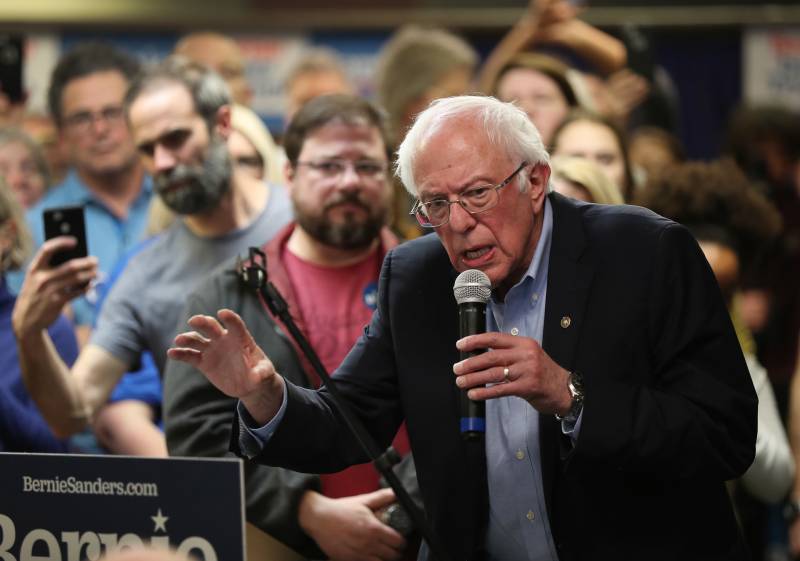Getting Specific
• The sweeping energy and social transformation known as the Green New Deal is central to the Sanders campaign, and he has left more fingerprints on it than any of the other senators running for president who co-sponsored it. Rep. Alexandria Ocasio-Cortez, D-N.Y., who propelled it into the center ring in Washington, got her electoral start working for Sanders in his 2016 campaign. And with its emphasis on social justice, working class jobs, health care and spending without regard to revenue sources, it echoes the ideas of Sanders’ long-time economic adviser, Stephanie Kelton.
• On Aug. 22, Sanders announced the most ambitious climate plan yet among the candidates. It promises to declare climate change a national emergency and put the Green New Deal into action by investing $16.3 trillion in a 10-year mobilization “that factors climate change into virtually every area of policy.” That dollar figure is far higher than what other candidates are proposing.
• His mobilization includes creating 20 million new jobs in clean energy, energy efficiency and technology, transforming the agricultural system for more sustainable farming and breaking up big agribusinesses and getting to 100 percent renewable energy by 2030, with complete decarbonization by 2050. In doing so, he focuses heavily on environmental justice and equity.
• To pay for it, Sanders said he would eliminate fossil fuel subsidies, cut back military spending related to oil, increase penalties for power plant emissions and “massively” raise taxes on fossil fuel income and wealth, among other steps. His plan doesn’t specifically mention a carbon tax, though Sanders has long advocated an aggressive one, and a carbon tax was included in the Democratic Party platform in 2016 at his campaign’s behest. He also relies on expected new tax income from the jobs created and a drop in social safety net costs if more people are working. His plan mentions “making the wealthy and large corporations pay their fair share.”
• Sanders’ consistent climate change message can be summed up in a few words: It’s real, it’s here, we caused it and we need to shift the whole economy away from fossil fuels. So he supports nationwide bans on fracking, on new fossil fuel infrastructure and on fossil fuel leases on public lands. He supports high-speed rail, electric vehicles and public transit. He has called for phasing out nuclear energy, and he supports spending money for adaptations to climate change, such as defenses against wildfires, floods, drought and hurricanes.
• Having built his last campaign on small individual donations, Sanders was the first presidential candidate to sign the No Fossil Fuel Funding pledge launched by climate and justice groups in 2016.
ICN’s Take
Sanders, with his open defense of democratic socialism, defines the leftist boundary of presidential politics while also staking out a populist territory that resonated well in 2016. His explicit aim is to “keep oil, gas and coal in the ground.” Although his signature campaign proposals (Medicare-for-All, raising the federal minimum wage to $15 per hour) aren’t about climate, the Green New Deal allows Sanders to use climate action as a vehicle for his economic and social justice aims. His proposal for a federal jobs guarantee would be tied to the need for workers to build infrastructure to aid in a clean energy transition as well as to help communities with restoration and resilience. Whether or not he emerges as the nominee, his base of voters, and his ideas, will deeply influence the 2020 campaign.
Read Bernie Sanders’ climate platform.
InsideClimate News is a nonprofit, independent news organization that covers climate, energy and the environment. Sign up for the ICN newsletter here.
